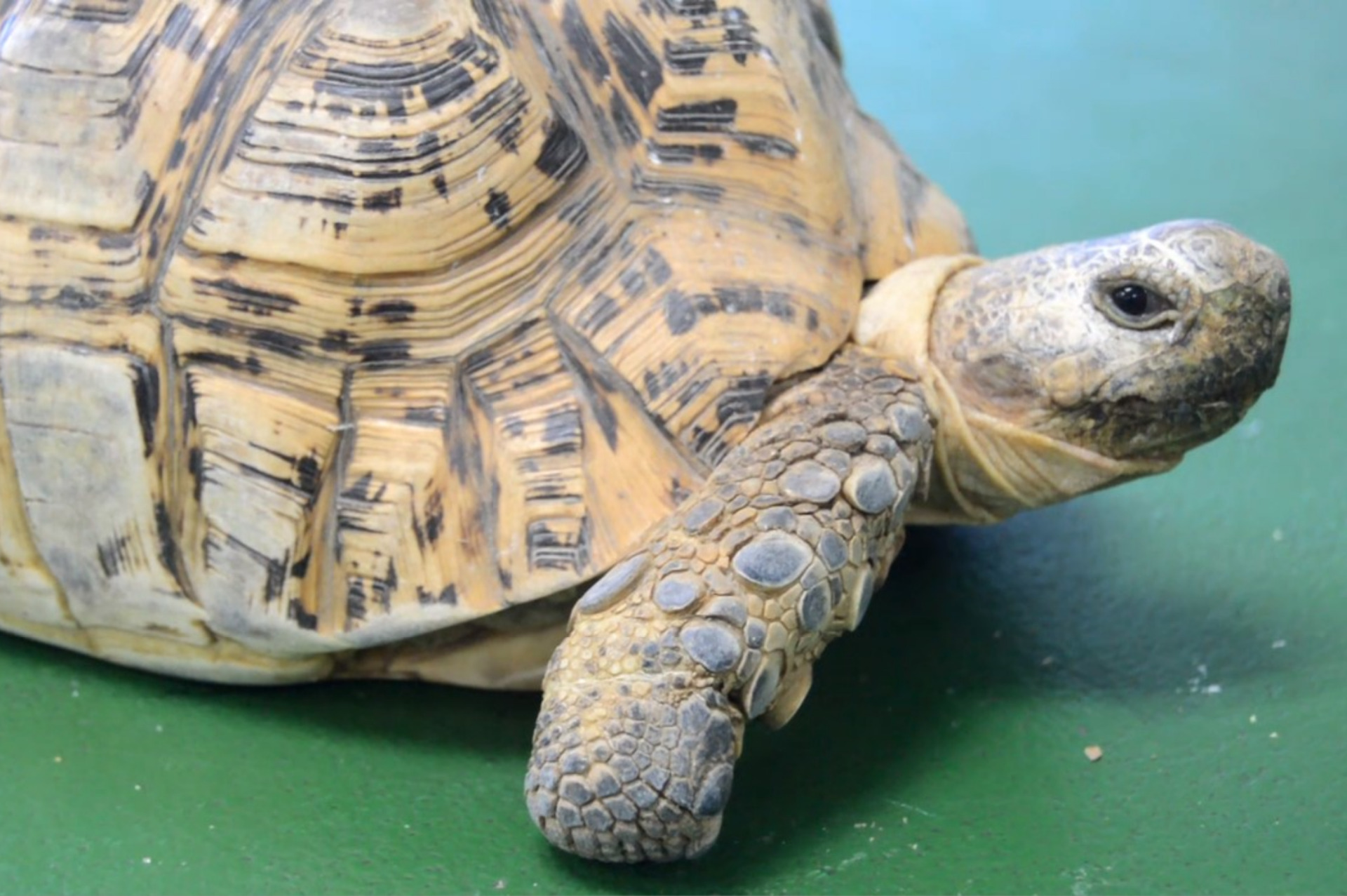Leopard Tortoise

Basic Information:
Scientific Name: Stigmochelys pardalis
Habitat: Leopard tortoises are found in the arid and savanna regions of eastern and southern Africa from Sudan to the Southern Cape Province.
Diet: Leopard tortoises are herbivores and subsist primarily on grasses and succulents.
Size: 2 to 2.5 feet long
Weight: About 28 pounds, but have been known to weigh up to 90 pounds.
Lifespan: 75 to 100 years
Distribution Map:
I.U.C.N. Conservation Status:

What does this mean?
Least Concern – a species determined by the International Union for Conservation of Nature (I.U.C.N.) to be pervasive, abundant, and thriving.
Our Leopard Tortoise:
Leo (Male) – Estimated Date of Birth Between 1995 & 1997
About Leopard Tortoises:
Getting their name from the unique pattern on their shell that resembles leopard spots, Leopard Tortoises are one of the largest species of tortoise in the world! They are known to be very relaxed and enjoy exploring and grazing on various grasses. While they are threatened by habitat loss and other typical conservational issues, they are remarkably resilient and are still considered to be widespread over their natural habitat. In fact, they are very apt for their environment because of various adaptations that they have. For one, they have water sacs called bursa sacs to hold spare water for when their habitat enters dry spells. They are also accustomed to being active when the temperatures are the most modest, and sleeping when its the hottest. Additionally, they don’t have many predators due to the fact that most other animals deem them and their shells too much effort for what its worth. That being said, if an animal ever does try to eat a leopard tortoise for a snack, the tortoise has been known to unload its bowels and bursa sacs to deter the threat with the surprise and stench that follows it.
Did You Know?!
- Leopard tortoises have been known to undertake extensive migrations in search of food. During hot, dry seasons they dig a hole in the ground and take refuge in it as a way to avoid dehydration and the excessive heat. They remain in this dormant state until the weather improves and the rains return.
- The leopard tortoise is the 4th largest species of tortoise in the world.
- Leopard tortoise eggs incubate in the ground for 8-18 months. Once born, the hatchlings come to the surface and immediately need to fend for themselves since the parents do not stick around to raise their young.
- A group of tortoises is known as a creep.
